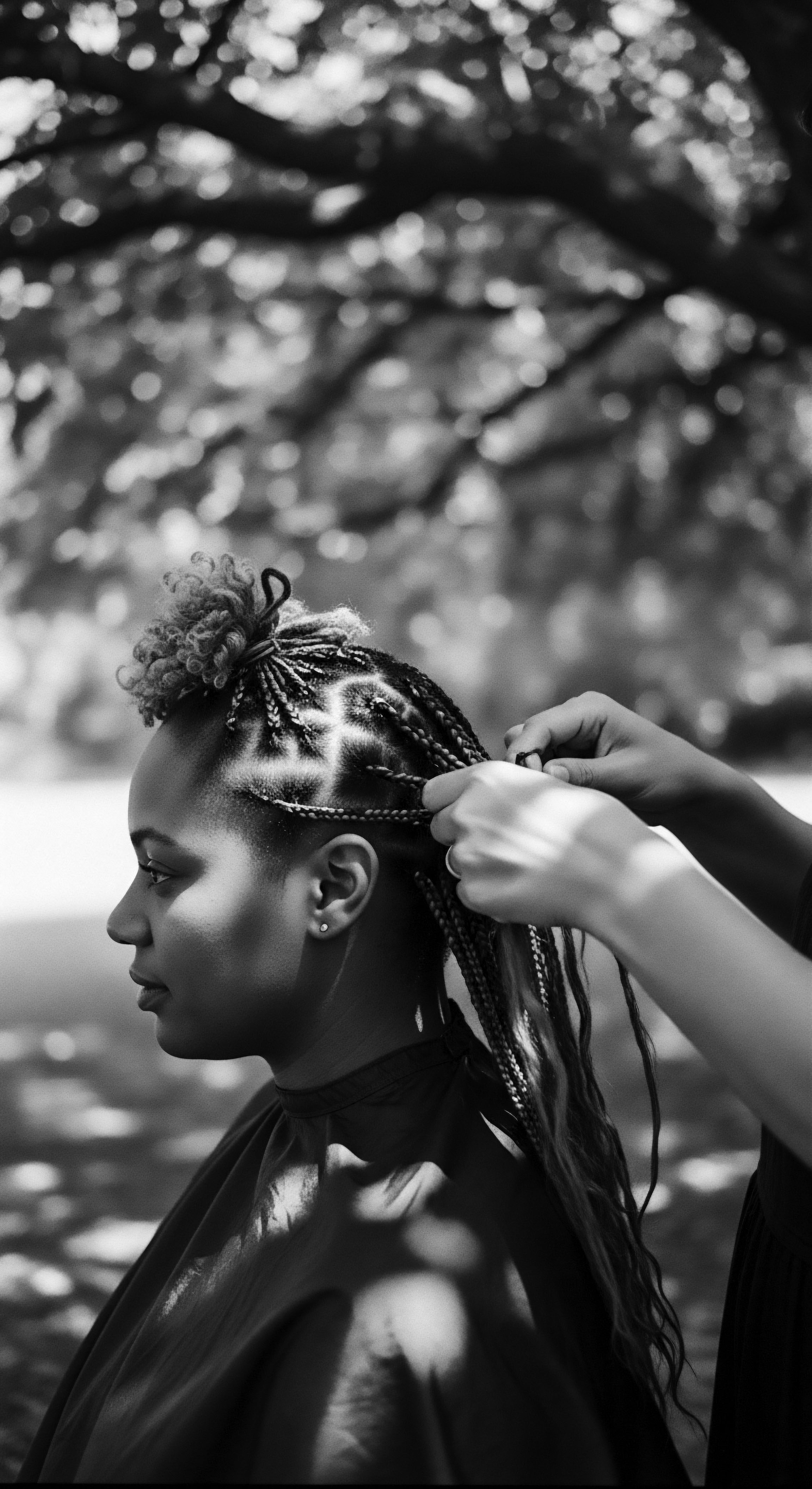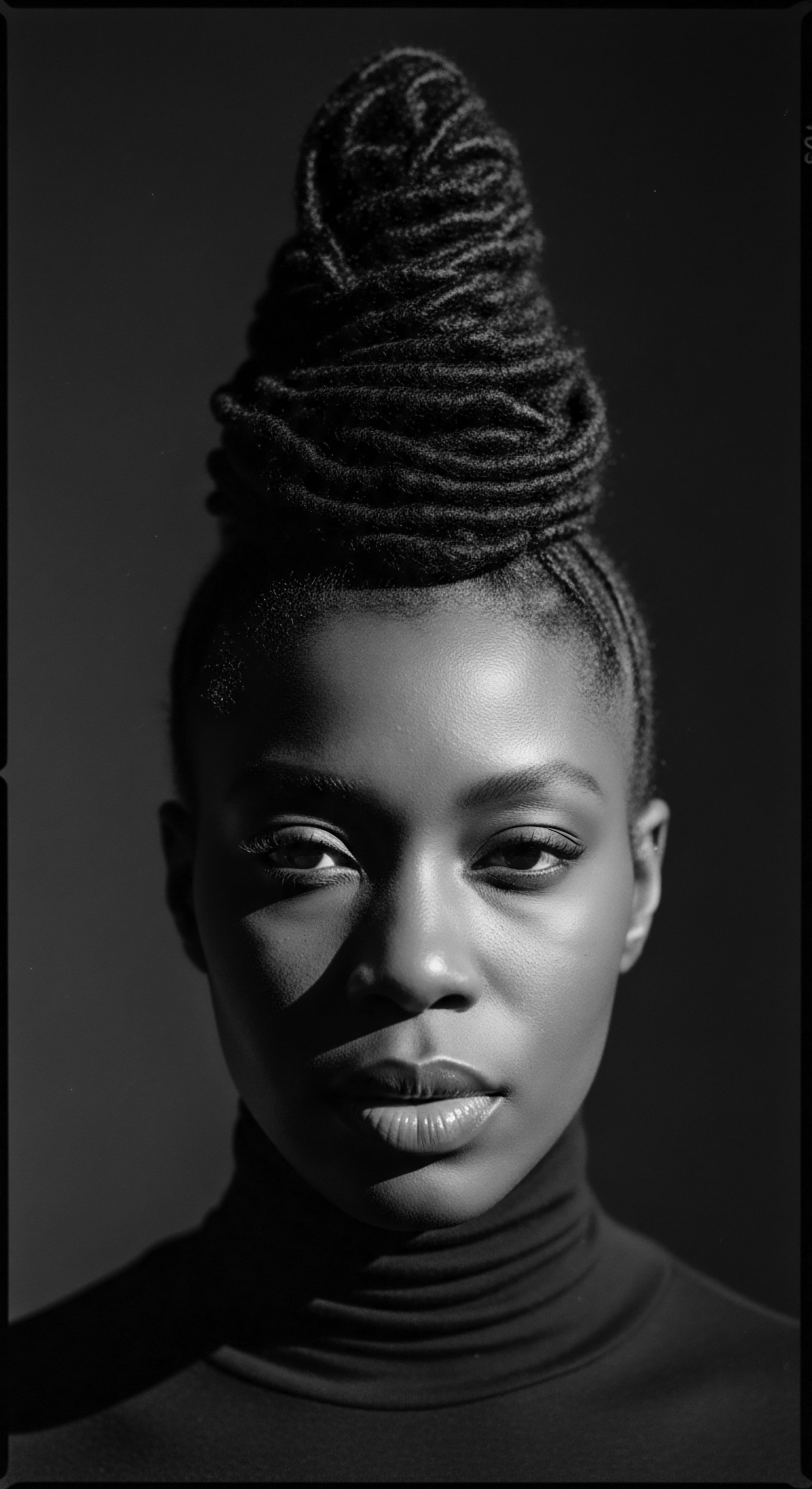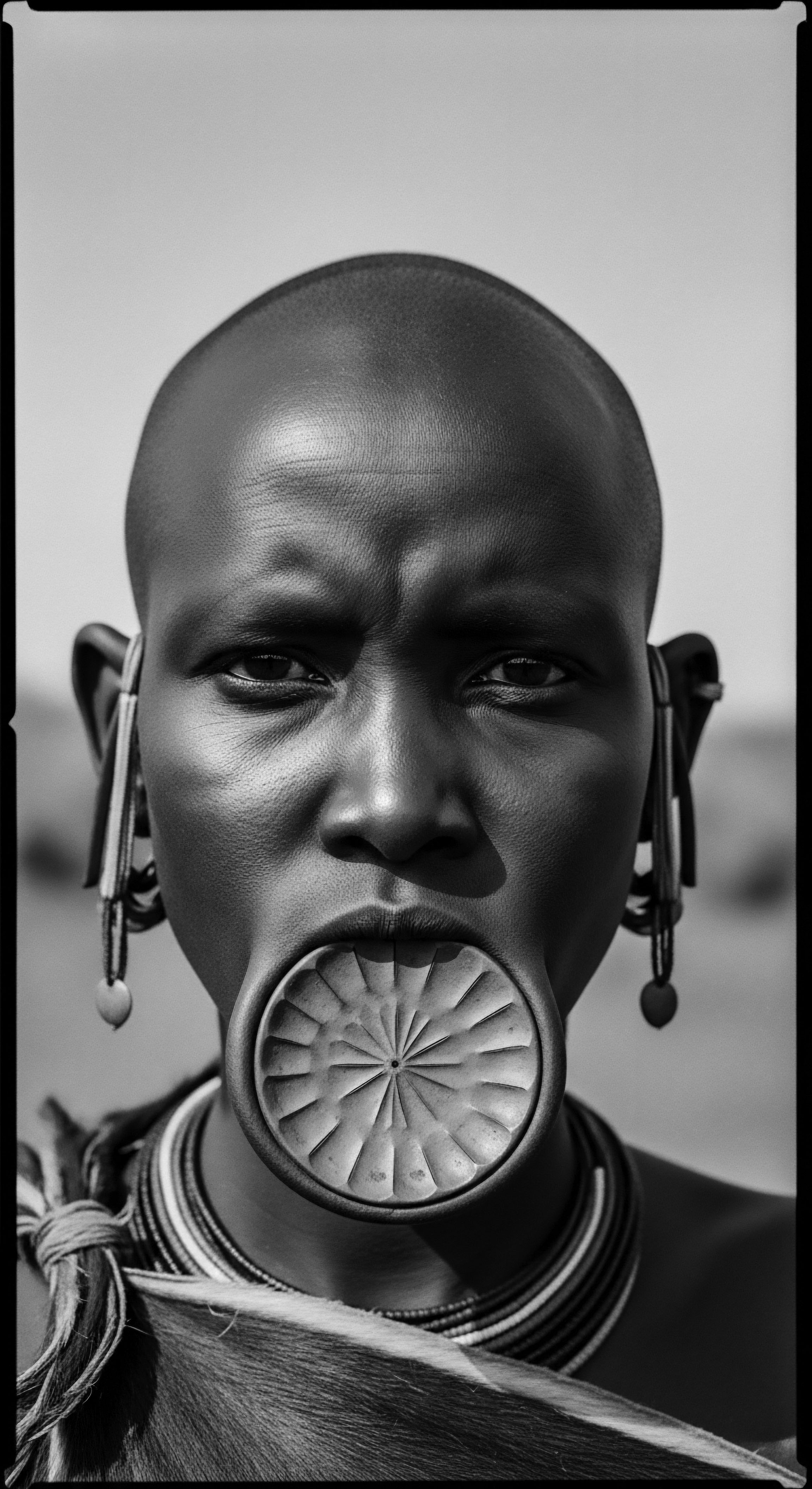
Fundamentals
The Miskito People, an enduring presence along the Caribbean littoral of Nicaragua and Honduras, represent a vibrant testament to cultural persistence and adaptation. Their designation encompasses a diverse Indigenous group whose history is deeply intertwined with the very landscape they inhabit, a tapestry of dense rainforests, meandering rivers, and the expansive sea. Understanding the Miskito requires an appreciation for their profound connection to their ancestral lands, a bond that has shaped their customs, their languages, and even the way they perceive themselves within the broader world. This foundational knowledge serves as a portal into the soul of a community whose identity is as resilient as the strands of hair that crown their heads, each a silent keeper of stories passed down through generations.
At its initial designation, the Miskito People refers to a distinct ethnic group, their presence historically concentrated along the Mosquito Coast. This region, often characterized by its lush biodiversity and maritime pathways, provided the resources and the isolation that allowed for the development of unique societal structures and spiritual beliefs. Their sustenance historically derived from fishing, hunting, and small-scale agriculture, practices that fostered an intimate knowledge of their natural surroundings.
This deep understanding of the environment extended to traditional remedies and personal care, including methods for maintaining physical wellbeing and the health of their hair. The Miskito way of life, from its elemental beginnings, reflects a harmony with the rhythms of the earth and the sea, a philosophy that informs every aspect of their collective existence.

Early Expressions of Hair Heritage
For the Miskito, as with countless Indigenous societies across the globe, hair is far more than a biological outgrowth; it is a profound symbol, a visible manifestation of identity, lineage, and spiritual connection. In their early communal life, the care and adornment of hair were not mere acts of vanity but rituals imbued with cultural significance. The choice of styling, the use of natural elements for cleansing and conditioning, and the communal sharing of these practices all contributed to a collective expression of belonging. These initial approaches to hair care were rooted in the wisdom of the elders, knowledge transmitted orally, generation by generation, ensuring the continuity of practices that honored the body as an extension of the natural world.
The earliest forms of hair care among the Miskito likely involved readily available botanical resources. The tropical environment provided a wealth of plants with properties beneficial for cleansing, strengthening, and conditioning the hair. Such practices were intuitive, guided by observations of nature and passed down through the family unit. These initial expressions of hair heritage laid the groundwork for more elaborate traditions that would evolve as the Miskito navigated the currents of history and encountered other cultures.
The Miskito People’s historical connection to their land shaped their early hair care, viewing strands as vital symbols of identity and ancestral wisdom.

Traditional Hair Care Ingredients and Their Purpose
The verdant landscape of the Mosquito Coast offered a natural apothecary for hair care. From the nourishing oils of local fruits to the cleansing properties of specific leaves and barks, Miskito individuals drew upon their environment to maintain their hair’s vitality. These traditional ingredients were selected not only for their tangible benefits but also for their perceived spiritual or energetic qualities, reflecting a holistic view of wellness.
- Coconut Oil ❉ Abundant in coastal regions, coconut oil was a primary agent for moisturizing and conditioning hair, protecting it from the sun and saltwater. Its widespread availability made it a staple.
- Plant Extracts ❉ Various leaves and barks, often from plants known for their saponin content, served as natural cleansers, gently purifying the hair and scalp without stripping natural oils.
- Herbal Infusions ❉ Certain herbs were steeped to create rinses, believed to promote growth, add shine, or address specific scalp conditions, demonstrating an early understanding of botanical therapeutics.
These practices underscore a deep reverence for the earth’s provisions, a foundational element of Miskito cultural identity. The knowledge of these ingredients and their application was a communal asset, shared and refined over centuries, becoming an indelible part of their living heritage.

Intermediate
Moving beyond a fundamental understanding, the Miskito People’s narrative becomes more intricate, particularly when examining the profound historical confluence that shaped their identity and, by extension, their textured hair heritage. The arrival of European powers and the subsequent, tragic transatlantic slave trade introduced new demographic elements to the Mosquito Coast, leading to a unique ethnogenesis. This period saw the intermingling of Indigenous Miskito communities with shipwrecked and escaped African individuals, giving rise to the Miskito Sambu, a distinct population whose physical appearance, including their diverse hair textures, mirrored their complex ancestry. This historical juncture represents a pivotal moment, broadening the scope of Miskito hair traditions to encompass a richer array of textures and care methodologies, deeply rooted in both Indigenous and African ancestral wisdom.
The meaning of “Miskito People” expands here to include this creolized dimension, where resilience became a shared inheritance. The Sambu, often distinguished by their darker complexions and varying degrees of coily, curly, and wavy hair, became a dominant force within the Miskito nation. Their hair, therefore, stood as a living testament to survival, adaptation, and the forging of new cultural expressions from disparate origins.
The historical processes of interaction and integration meant that traditional Miskito hair practices began to incorporate elements brought from the African continent, leading to a unique synthesis of care rituals and aesthetic preferences. This cultural exchange enriched the communal understanding of hair, acknowledging its protective qualities and its capacity to signify a shared, evolving identity.

The Miskito Sambu and Textured Hair Legacy
The emergence of the Miskito Sambu population, beginning in the 17th century, represents a powerful illustration of cultural blending and the creation of a distinctive textured hair legacy. This group, formed from the union of Indigenous Miskito and African individuals, carried forward a unique genetic inheritance that manifested visibly in their hair. Their hair textures, ranging from loosely curled to tightly coiled, demanded specific care approaches, many of which would have been adaptations of ancestral African techniques, combined with the knowledge of local Miskito botanicals. This fusion created a robust system of hair care, prioritizing moisture retention, protection from environmental elements, and styles that honored both Indigenous and African aesthetic sensibilities.
The hair of the Miskito Sambu became a powerful, visible marker of their identity within the broader regional landscape. It was a declaration of their unique origin, a symbol of the interconnectedness of disparate peoples who found common ground and forged a new way of being on the Mosquito Coast. This legacy is not merely about hair as a physical attribute; it represents the deep cultural significance of hair as a repository of collective memory, resilience, and the enduring spirit of adaptation in the face of historical upheaval.
The Miskito Sambu’s hair symbolizes a unique blend of Indigenous and African heritage, reflecting resilience and cultural synthesis.

Shared Ancestral Practices ❉ A Confluence of Care
The Miskito Sambu experience reveals a compelling convergence of ancestral practices. The traditional knowledge of the Miskito regarding local plants for cleansing and conditioning met the deep-seated understanding of textured hair care brought by African ancestors. This cultural exchange was not a simple replacement of one tradition with another, but a thoughtful integration, a selective adoption of techniques that best served the needs of diverse hair textures in a tropical environment.
Consider the use of natural oils. While coconut oil was already a staple for the Miskito, the African tradition brought a heightened awareness of its protective and emollient properties for denser, more coily hair types, emphasizing its role in sealing in moisture and preventing breakage. Similarly, protective styling, a hallmark of many African hair traditions, likely found new resonance and adaptation within the Miskito Sambu communities, serving both aesthetic and practical purposes in their daily lives.
| Traditional Miskito Hair Practice Use of local plant extracts for cleansing. |
| African Ancestral Influence/Sambu Adaptation Emphasis on gentle, non-stripping cleansers; perhaps specific herbal remedies for scalp health. |
| Significance for Textured Hair Heritage Preserves natural oils, crucial for textured hair's moisture balance and integrity. |
| Traditional Miskito Hair Practice Application of natural oils (e.g. coconut) for shine. |
| African Ancestral Influence/Sambu Adaptation Deep conditioning with oils; sealing moisture into hair strands. |
| Significance for Textured Hair Heritage Addresses the tendency of textured hair to dryness, enhancing elasticity and preventing breakage. |
| Traditional Miskito Hair Practice Simple styling for daily activities. |
| African Ancestral Influence/Sambu Adaptation Development of intricate protective styles (braids, twists). |
| Significance for Textured Hair Heritage Minimizes manipulation, reduces damage, and allows for length retention in diverse textures. |
| Traditional Miskito Hair Practice Hair as a symbol of tribal identity. |
| African Ancestral Influence/Sambu Adaptation Hair as a symbol of resistance, cultural pride, and community connection. |
| Significance for Textured Hair Heritage Reinforces hair's role as a powerful medium for identity expression and cultural continuity amidst change. |
| Traditional Miskito Hair Practice This table illustrates the dynamic exchange that shaped the Miskito Sambu's approach to hair, a testament to shared wisdom. |
The ongoing practice of these combined care rituals solidified hair’s meaning as a cultural artifact, a living link to their mixed ancestry. It became a way to honor both Indigenous roots and the journey of their African forebears, a tangible expression of their collective story etched in every curl and coil.

Academic
The Miskito People, from an academic vantage point, offer a compelling case study in ethnogenesis, cultural syncretism, and the embodied politics of identity, particularly through the lens of textured hair heritage. The meaning of “Miskito People” here expands to encompass a sophisticated understanding of their historical formation as a distinct ethno-racial group, one shaped by Indigenous resilience and the profound, often unacknowledged, contributions of Afro-descendant populations. This complex history has not merely influenced their social structures or linguistic patterns; it has indelibly marked their physical expressions of self, with hair standing as a primary, visible marker of this intricate lineage. The delineation of their identity, therefore, necessitates an examination of how biological inheritance, cultural adaptation, and historical agency converge in the very strands that crown their heads.
Scholarly inquiry into the Miskito reveals a deeply layered cultural phenomenon, where traditional Indigenous practices met and often integrated with African retentions, especially concerning corporeal aesthetics and care rituals. This synthesis, rather than being a mere amalgamation, represents a creative re-imagining of identity and self-presentation in a new world. The explication of Miskito hair heritage thus transcends simplistic definitions, delving into the socio-historical processes that rendered hair a potent site for the negotiation of belonging, status, and resistance against homogenizing colonial forces. The very essence of Miskito identity, particularly for the Miskito Sambu, is inextricably tied to the narratives their hair communicates—stories of survival, adaptation, and enduring cultural pride.

The Sociopolitical Dimensions of Miskito Hair
The sociopolitical dimensions of hair within the Miskito context are profound, extending far beyond mere aesthetics to become a statement of selfhood in a world that often sought to erase or redefine Indigenous and African identities. For the Miskito Sambu, their hair, with its varied textures, became a visible symbol of their unique ethnogenesis—a fusion born of Indigenous Miskito autonomy and African resilience in the face of enslavement. This distinct appearance set them apart, marking them as neither solely Indigenous nor solely African, but a new, powerful collective. The deliberate cultivation and styling of their textured hair could be understood as an act of self-affirmation, a non-verbal declaration of their sovereign identity on the Mosquito Coast, a territory they largely controlled for centuries.
Academic scholarship, such as that by Michael Olien (1983), provides historical context for understanding the Miskito’s interactions with European powers, particularly the British, and the subsequent role of the Miskito Sambu in maintaining the Miskito Kingdom’s influence. This historical positioning meant that the Miskito Sambu were not merely recipients of cultural influence; they were active agents in shaping their own cultural practices, including those related to hair. Their hair, therefore, did not just signify their mixed ancestry; it symbolized their political and social standing, their autonomy, and their collective defiance against external control. This historical example underscores how hair can become a site of cultural and political contestation and affirmation.
Miskito hair, especially for the Sambu, served as a potent sociopolitical statement of unique identity and autonomy.

Ethnobotany and Ancestral Wisdom in Hair Care
A rigorous examination of Miskito hair care necessitates a deep dive into their ethnobotanical knowledge, a testament to centuries of empirical observation and inherited wisdom. The utilization of specific plants for hair and scalp health is not accidental; it represents a sophisticated understanding of botanical properties, often mirroring contemporary scientific insights. For instance, the widespread application of Coconut Oil (Cocos nucifera) among coastal Miskito communities is not merely a traditional practice but a scientifically sound method for deep conditioning and protein retention in hair, especially beneficial for the structural needs of textured strands. This knowledge, passed down through oral traditions and practical demonstration, highlights an indigenous scientific methodology, grounded in direct interaction with the environment.
Furthermore, the Miskito’s traditional reliance on local flora for medicinal and cosmetic purposes offers a rich vein for interdisciplinary study. Consider the traditional uses of plants like Pachira Aquatica, whose seeds yield an oil with emollient properties, or the cleansing saponins derived from various barks and leaves. These botanical applications are not random; they are part of a systematic approach to health and beauty, a holistic understanding that views the body, including hair, as an integral part of the natural ecosystem. The sustained use of these natural resources for hair care speaks to a long-term, adaptive relationship with their environment, one that has been crucial for the preservation of their distinct hair heritage.
One specific historical example illuminating the Miskito People’s connection to textured hair heritage and ancestral practices lies in the documented persistence of specific hair treatments among Miskito Sambu women. Anthropological accounts from the early 20th century, such as those by Mary W. Helms in her work on the Miskito (Helms, 1971), describe practices involving the preparation of plant-based washes and oils, often infused with specific herbs, for maintaining the strength and sheen of hair. These preparations, requiring intricate knowledge of plant harvesting, processing, and application timing, point to a sophisticated, communal approach to hair wellness.
This communal aspect, where knowledge is shared and practices are performed collectively, underscores the social meaning of hair care beyond individual grooming; it becomes a binding ritual, reinforcing kinship ties and cultural continuity. The detailed processes for extracting oils from native seeds and blending them with other botanical elements for hair treatments demonstrate an empirical science rooted in ancestral wisdom, tailored specifically to the needs of hair textures prevalent within their mixed heritage.

Hair as an Epistemic and Cultural Repository
Hair, within the Miskito worldview, functions as an epistemic and cultural repository, embodying knowledge, history, and collective identity. The various styles, adornments, and care rituals are not arbitrary; they encode information about social status, age, marital state, and even spiritual beliefs. For instance, certain braiding patterns or hair lengths might have traditionally signified rites of passage or specific roles within the community.
This symbolic density positions hair as a dynamic medium for cultural transmission, a non-verbal language that communicates complex meanings across generations. The enduring meaning of these practices, even in the face of modernization, speaks to their deep roots within the Miskito cultural psyche.
Moreover, the maintenance of distinct hair practices serves as a form of cultural memory, a living archive of their journey. In a region marked by colonial encounters and the imposition of foreign aesthetic standards, the persistence of traditional Miskito and Miskito Sambu hair care practices becomes an act of defiance and cultural self-preservation. It is a tangible link to their ancestors, a way to honor the ingenuity and resilience that allowed their heritage to endure. The careful attention paid to their hair, therefore, is not merely about personal grooming; it is a profound act of cultural remembrance and continuity, ensuring that the stories of their past continue to shape their present and guide their future.

Reflection on the Heritage of Miskito People
The exploration of the Miskito People, particularly through the luminous lens of their textured hair heritage, reveals a narrative far richer than any simple definition could convey. It is a profound meditation on resilience, on the remarkable capacity of human spirit to synthesize, adapt, and preserve its unique essence amidst the powerful currents of history. From the elemental biology that shapes each curl and coil, mirroring the diverse landscapes of their ancestral lands, to the living traditions of care that bind communities in shared rituals, the Miskito story echoes the very ‘Soul of a Strand’ ethos.
Their journey, marked by Indigenous autonomy and the transformative influx of African resilience, showcases how hair transcends its biological function, becoming a profound canvas for identity, a testament to the enduring wisdom passed through generations. The Miskito’s hair, in its myriad forms, is an unbound helix, a living archive that voices not only their past but also shapes their future, a vibrant testament to the power of heritage to persist and inspire.

References
- Helms, M. W. (1971). Asang ❉ Adaptations to Culture Contact in a Miskito Community. University of Florida Press.
- Olien, M. D. (1983). The Miskito Kings and the Line of Succession. Journal of Anthropological Research, 39(2), 198-207.
- Newson, L. A. (1987). Indian Survival in Colonial Nicaragua. University of Oklahoma Press.
- Davidson, W. V. (1976). The Mosquito Coast ❉ An Ethnohistorical and Ethnogeographical Study. University of Wisconsin-Milwaukee.
- Offen, K. H. (2003). The Miskito Kingdom ❉ Landscape and the Emergence of a Frontier Identity in Northeastern Nicaragua and Honduras. University of Texas at Austin.
- Radcliffe, S. A. & Peake, L. (1996). Development and Gender in the Andes. Routledge. (Though not specific to Miskito, offers theoretical frameworks for indigenous gender roles and cultural persistence).
- Carey, M. (2010). The Miskito Coast ❉ An Environmental and Social History. University of Alabama Press.
- García, E. F. (1996). The Miskito Indians of Nicaragua ❉ A People Under Siege. Indiana University Press.
